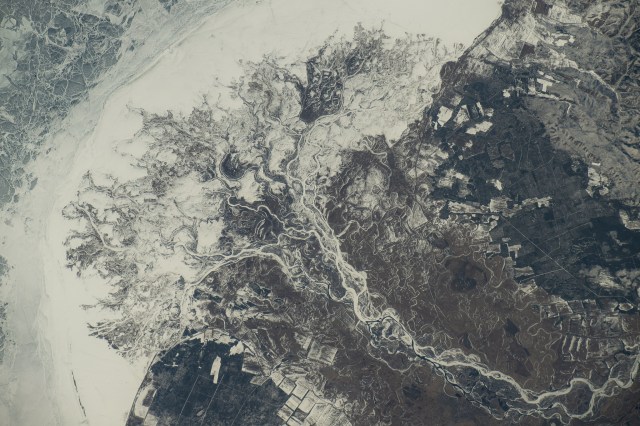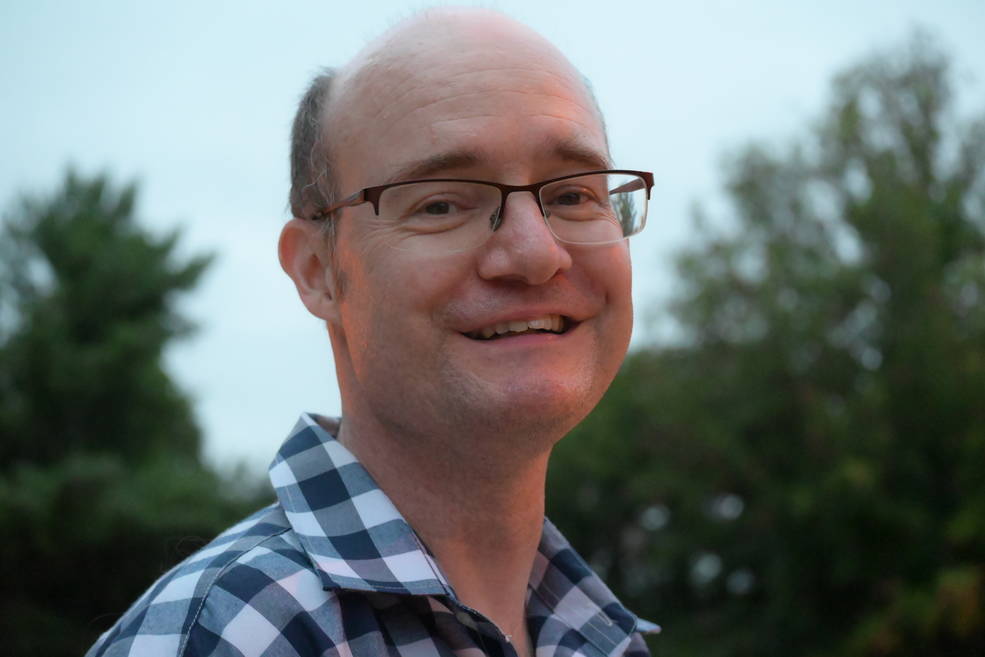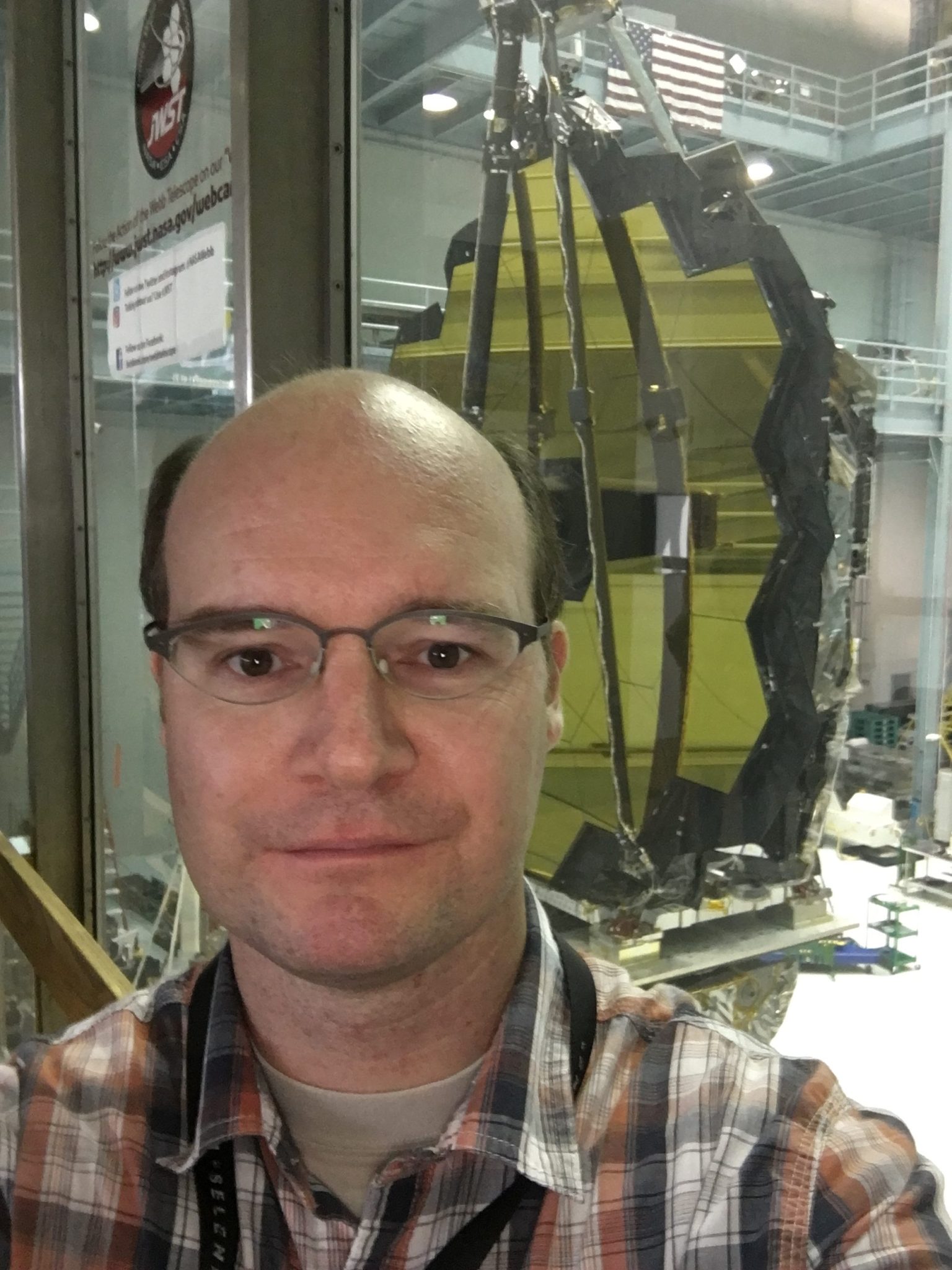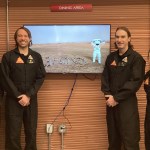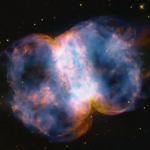Goddard planetary scientist Sander Goossens uses "remote learning" - that is, satellite data, like radio tracking data, image data, or altimetry - to study planetary bodies in our solar system.
Name: Sander Goossens
Title: Planetary Scientist
Organization: Planetary Geology, Geophysics, and Geochemistry Laboratory (Code 698), Sciences and Exploration Directorate
NASA recently announced 10 scientists who will participate on Martian Moons Exploration (MMX), a Japanese mission that plans to return a sample from Mars’ moon Phobos to Earth in 2029. One of the 10 is Goddard planetary scientist Dr. Sander Goossens, who will study the gravity, shapes, and other properties of Mars’ moons Phobos and Deimos.
Tell us more about the work you do at Goddard?
My research interests are in planetary geodesy, which is related to measuring the gravity field and shape of solar system bodies. I’m involved mostly in using data from satellites – be it radio tracking data or image data or altimetry – to infer the gravity fields of the body. We look for variations locally in gravity and shape, and then try and use that information to try and determine the interior structure of an object.
What can we learn from studying objects’ gravity fields?
It’s sort of a way of looking inside a planet, without actually being on the planet. On Earth we have seismology (the study of earthquakes), which is probably the best way of doing that, but there’s very little data like that of other bodies.
One of the ways of learning more about the object is measuring its gravity field – gravity is dependent on density variations inside. It’s a bit more complicated than this, but if you measure the gravity it can give you hints, together with topography, about density variations.
For example, if you look at the Moon there’s the maria areas, the “seas” that look like dark patches. Those are craters, so they’re depressions in the Moon, but if you measured the gravity field, it turns out that they have a very strong positive attraction, unlike what one would expect, and this gives hints as to something going on underneath the surface.
How did you get to working in this field? What path led you to Goddard?
I’m from the Netherlands and my background is in aerospace engineering. Our group in the Netherlands already had a long-standing relationship with Goddard, for example in using Goddard geodetic data analysis software. It’s the workhorse software that we use for gravity field determination by analyzing spacecraft tracking data.
After my Ph.D. in Delft, I moved to Japan, where there also was a similar connection with Goddard for using the analysis software. It was just really fortunate timing for me to finish my Ph.D. at that moment as the Japan Aerospace Exploration Agency (JAXA) were about to launch their lunar satellite, Kaguya.
Initially, I worked on processing some of the older lunar data (from the pre-Apollo era to Lunar Prospector data from 1998-1999) to use them with the new data for gravity field determination. When Kaguya launched, we collected the first global tracking data for the Moon – which was not possible before because of the tidal lock between the Earth and Moon – and were able to make the first global coverage gravity fields of the Moon, combining the new data with the old data.
In Japan we were working together with people at Goddard as well. I came over to the U.S. to work on the Gravity Recovery and Interior Laboratory (GRAIL) mission, and that’s how I ended up at Goddard.
I’ve since worked on several different missions – I’ve worked on Mars data, on Venus data, on Mercury data, and now we are back to Mars again.
What excites you about the MMX mission?
When the call came out for the Participating Scientist Program, it was very exciting. We just finished an analysis for the OSIRIS-REx mission, which will return a sample of asteroid Bennu to Earth this fall. That analysis used multiple data types that would also be applicable and very useful for MMX. On top of that, it might provide me with an opportunity to work together again with some of my former colleagues in Japan.
Why do we want to find out more about Phobos’ gravitational field and how does your research fit in to that?
We haven’t had that many observations of Phobos. We’ve had plenty of Mars spacecraft of course, and some of them have flown by Phobos taking images and other data, but there are still many things that are not quite clear about the moons of Mars.
The main thing that is unclear is their origin. There’s two lines of thought: that the moons are captured asteroids, or maybe formed at the same time as Mars, or are remnants of some sort of impact. One of the main themes of the MMX mission is to resolve this by obtaining lots of observations, and by landing on Phobos to retrieve a sample and bring it back to Earth.
My work fits into this by helping with data analysis, and by verifying the determination of the moons’ gravity, shape, and rotational state. These are all very important for landing, as well as for finding out the bulk density and structure of the moons.
What’s the most exciting or interesting thing about working at Goddard?
One of the most interesting things, I think, is that you get to work with new data and be able sometimes to see things that other people haven’t seen or haven’t noticed before.
Another thing that is great here is that there’s so many other world experts around you and you get to work with them. That was one of the reasons also to come here, because I knew that I’d be working with the people who made the software that I used for a long time, but also who developed the methods, the measurements – the people who were just really on top of everything.
By Marta Hill
NASA’s Goddard Space Flight Center, Greenbelt, Md.
Conversations With Goddard is a collection of Q&A profiles highlighting the breadth and depth of NASA’s Goddard Space Flight Center’s talented and diverse workforce. The Conversations have been published twice a month on average since May 2011. Read past editions on Goddard’s “Our People” webpage.

